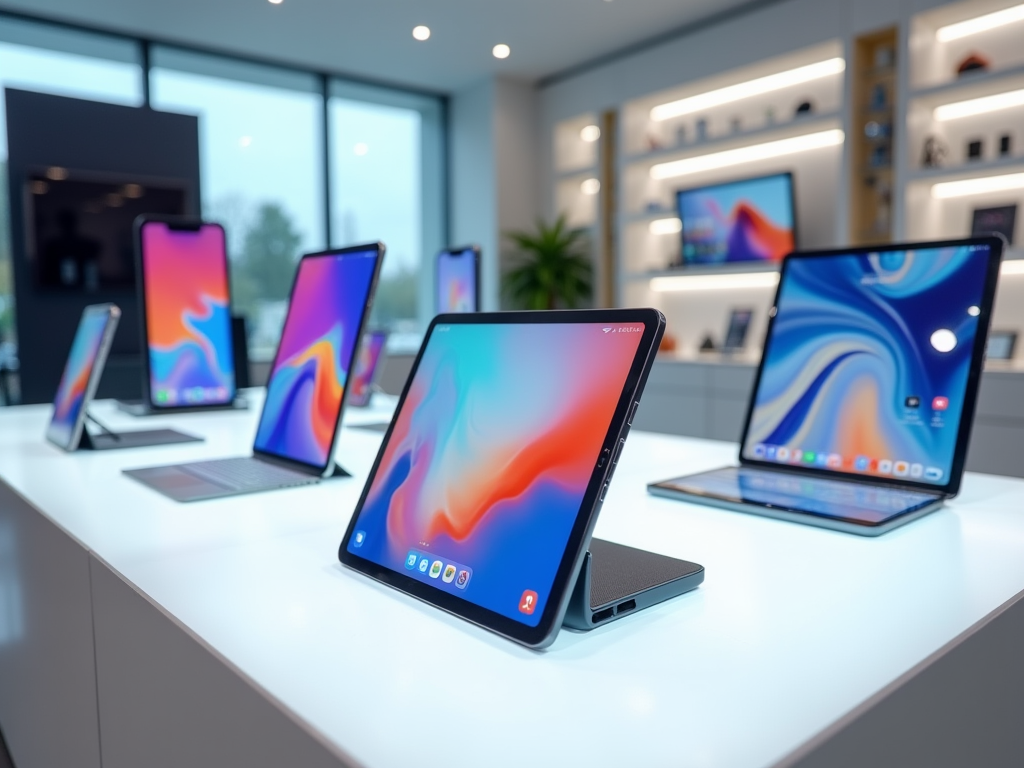As we move further into the 21st century, consumer electronics are evolving at an unprecedented pace. Innovations in technology not only enhance the user experience but also significantly impact how we interact with our devices. In this article, we explore the top five emerging technologies in consumer electronics, which promise to redefine the landscape of our everyday gadgets. From smart home devices to advanced display technologies, these advancements are shaping the future of consumer electronics that you should absolutely pay attention to.
1. Artificial Intelligence and Machine Learning

Artificial intelligence (AI) and machine learning (ML) are among the most transformative technologies impacting consumer electronics today. These technologies are enabling devices to learn user preferences and automate tasks, making them smarter and more intuitive. A few key areas where AI and ML are making a significant impact include:
- Smart Home Automation: Devices can now manage energy consumption, security, and even cooking processes with minimal user input.
- Personal Assistants: Voice-activated assistants like Amazon Alexa and Google Assistant leverage AI to provide personalized responses and perform tasks based on user commands.
- Enhanced Entertainment Options: Streaming services use ML algorithms to recommend content based on viewing history, thereby improving user experience.
AI not only makes these devices more efficient but also adds a layer of convenience that transforms the way we engage with technology at home and on the go.
2. 5G Technology

The advent of 5G technology represents a huge leap in connectivity that is reshaping consumer electronics. With faster data speeds, lower latency, and the ability to connect more devices simultaneously, 5G opens up new possibilities for various applications. The significant benefits of 5G include:
- Seamless Streaming: Users can enjoy high-definition streaming without buffering issues.
- Smart City Integration: Improved connectivity enables better communication between IoT devices used in smart cities, enhancing urban living.
- Augmented and Virtual Reality: 5G allows for smoother and more immersive AR and VR experiences, revolutionizing gaming and simulations.
The proliferation of 5G will not only enhance existing consumer electronics but also pave the way for innovative gadgets that depend on a robust data network.
3. Foldable and Flexible Displays
Foldable and flexible display technology is changing the idea of screens in consumer electronics, pushing the limits of design and functionality. This innovation allows for a diverse range of products, including smartphones, tablets, and wearables. Advantages of foldable displays include:
- Enhanced Portability: Devices can easily transform from compact sizes to larger screens, making them ideal for productivity on the go.
- Creative Design Opportunities: Manufacturers can explore new forms and designs that distinguish their products in the competitive market.
- Multi-functional Uses: Devices with foldable displays can serve dual purposes, such as a phone that can expand into a tablet.
As this technology matures, we can expect an influx of innovative products featuring foldable screens that cater to the needs of users who seek versatility and practicality.
4. Quantum Dot Technology
Quantum dot technology is revolutionizing display systems by improving color accuracy and energy efficiency in screens. Used predominantly in televisions and computer monitors, quantum dots are nanoscale semiconductor particles that emit light when excited. Key benefits of quantum dot technology include:
- Superior Color Performance: Quantum dots can produce a wider color gamut, ensuring that viewers enjoy vibrant and accurate colors.
- Energy Efficiency: These displays consume less power compared to traditional LED screens, which is beneficial for both the environment and user costs.
- Improved Viewing Angles: Quantum dot displays maintain color quality at different viewing angles, enhancing the experience for group viewing.
As more manufacturers integrate quantum dot technology into their product lines, consumers will benefit from a richer viewing experience without the heavy energy costs.
5. Wearable Technology Advancements
Wearable technology has come a long way, from simple fitness trackers to advanced smartwatches and health monitoring devices. These advancements offer myriad possibilities and utilities that impact users’ daily lives. Notable developments in wearable technology include:
- Health Monitoring: Advanced sensors now track vital signs, providing valuable data for health diagnostics and personal fitness.
- Integration with Smart Home Devices: Wearables can control smart homes, allowing users to manage their environment directly from their wrist.
- Fashion and Functionality: As wearables become more stylistic and integrated into fashion, consumer acceptance continues to grow.
This fusion of technology and fashion ensures that wearables are not just functional but also hold a significant place in personal style, making them indispensable in the modern tech landscape.
Conclusion
The landscape of consumer electronics is constantly evolving, and staying informed about emerging technologies is crucial for both consumers and industry stakeholders. From AI and 5G to revolutionary display technologies and innovative wearables, the future holds immense potential for enhancing our interactions with devices. Understanding these developments helps consumers make informed choices about tech that improves their daily lives while pushing the industry towards greater innovation and sustainability.
Frequently Asked Questions
1. What is the impact of AI on consumer electronics?
AI enhances consumer electronics by enabling smarter devices that learn user preferences, automate tasks, and provide personalized experiences, improving overall user engagement.
2. How does 5G technology benefit consumer electronics?
5G technology allows for faster data transfer, lower latency, and the capability to connect more devices simultaneously, enabling more seamless streaming, enhanced AR/VR experiences, and improved smart city integrations.
3. What are the advantages of foldable and flexible displays?
Foldable displays provide enhanced portability, creative design opportunities, and multi-functional uses, allowing devices to be both compact and versatile.
4. Why is quantum dot technology considered innovative?
Quantum dot technology significantly improves color accuracy, energy efficiency, and viewing angles in displays, providing consumers with richer visual experiences in their devices.
5. What is the future of wearable technology?
The future of wearable technology involves advancements in health monitoring, better integration with smart home devices, and increasing acceptance in fashion, making wearables both functional and stylish.


